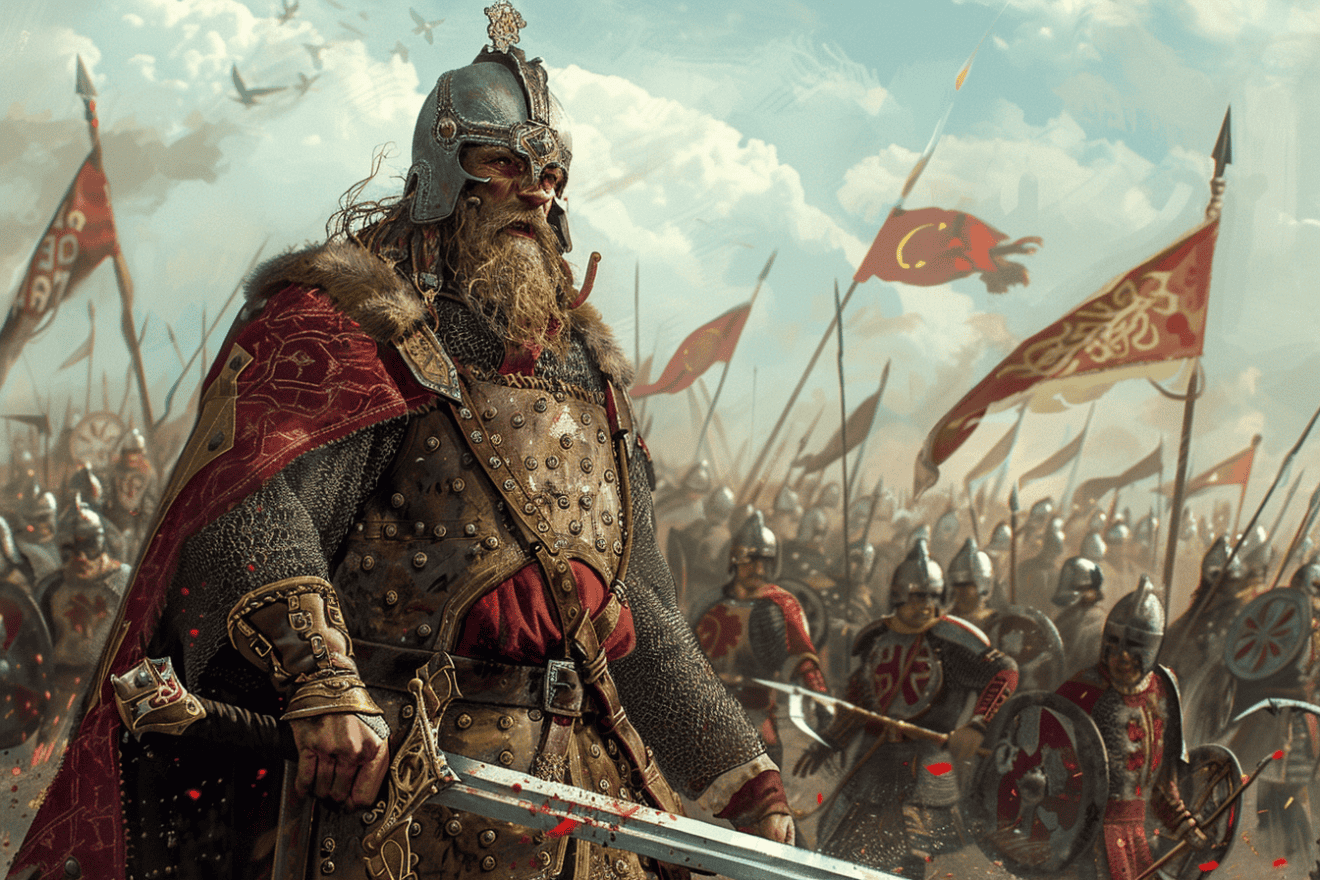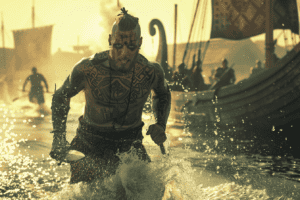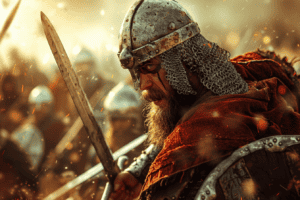As King Olaf II Haraldsson rallied his troops on the blood-soaked fields of Stiklestad, the fate of Norway hung precariously in the balance.
The year was 1030, and the Danish occupation had reached a boiling point. The ensuing battle would prove to be a turning point in the country’s history, yet the outcome was far from certain.
Olaf’s bold decision would either liberate his people or seal their fate – and his own.
What drove this enigmatic leader to make such a fateful choice, and what were the consequences of his bravery?
The Road to Stiklestad

In the summer of 1030, King Olaf II Haraldsson, driven by his determination to reclaim Norway’s throne, set off on a perilous journey north to Stiklestad. Having spent years in exile, Olaf was determined to oust the Danish occupiers and restore his rightful rule.
He gathered a loyal group of supporters, including his brother, Harald, and a handful of trusted warriors. As they ventured north, they encountered numerous challenges, including treacherous terrain and harsh weather conditions.
Despite these obstacles, Olaf’s determination never wavered. He rallied his troops, inspiring them with tales of Norway’s rich heritage and the promise of a brighter future. As they approached Stiklestad, the king’s resolve grew stronger, fueled by his conviction that the fate of Norway hung in the balance.
The road to Stiklestad was fraught with danger, but Olaf’s unwavering commitment to his cause propelled him forward, setting the stage for the epic battle that would soon unfold.
Battle of the Nobles

As Olaf’s forces approached Stiklestad, they clashed with a contingent of nobles loyal to the Danish occupiers, sparking a fierce and decisive battle that would determine the fate of Norway’s monarchy.
The nobles, led by Thorir the Hound, had long been loyal to the Danish king, Cnut the Great, and were determined to prevent Olaf’s return to power. The battle was intense, with both sides suffering heavy losses. Despite being outnumbered, Olaf’s forces held their ground, buoyed by their king’s determination and charisma.
The nobles, however, were well-trained and well-equipped, and they managed to push Olaf’s forces back. The battle raged on for hours, with neither side giving an inch. It was clear that the outcome of this battle would decide the course of Norwegian history.
As the day wore on, the stakes grew higher, and the tension mounted. The fate of Norway’s monarchy hung precariously in the balance, as the two sides clashed in a frenzy of steel and blood.
Olaf’s Fateful Decision

Faced with dwindling numbers and a stalemate, Olaf made the fateful decision to rally his troops for a final, desperate charge. This bold move was a last-ditch effort to break the enemy’s lines and turn the tide of the battle.
Despite being vastly outnumbered, Olaf’s men responded with courage and determination, charging forward with a fierce battle cry.
As they clashed with the enemy, Olaf’s troops fought valiantly, but they were ultimately no match for the superior forces arrayed against them. The battle was intense and brutal, with heavy casualties on both sides.
Olaf, undaunted by the odds, led the charge himself, inspiring his men to fight on even in the face of overwhelming defeat.
Despite his bravery, Olaf’s decision to charge proved to be a fatal mistake. His army was decimated, and he himself was gravely wounded in the fighting. The outcome of the battle was all but certain, and Olaf’s fate was sealed.
His fateful decision would have far-reaching consequences, shaping the course of Norwegian history for generations to come.
The Aftermath of Defeat

Olaf’s severely injured body was left on the battlefield, a reflection of his bravery and a symbol of his army’s overwhelming defeat. The consequences of the battle were immediate and far-reaching.
The Norwegian army, once confident in their king’s leadership, was now in disarray. Many of Olaf’s closest advisors and nobles lay dead or wounded, leaving a power vacuum that would be challenging to fill. The defeat also marked the end of Olaf’s reign, and his successor, Magnus the Good, would face the challenging task of rebuilding and reuniting the fractured kingdom.
The battle’s outcome was a devastating blow to the Norwegian people, who’d placed their hopes in Olaf’s ability to restore their nation’s glory. The aftermath of Stiklestad would be a dark and tumultuous period in Norwegian history, as the nation struggled to come to terms with its defeat and find a new path forward.
Legacy of a Martyr

Within a few years, the story of Olaf’s bravery and tragic demise at Stiklestad would transform him into a martyred saint, revered by the Norwegian people. His legacy would spread far and wide, with tales of his heroism and devotion to Christianity enchanting the hearts of many.
The Norwegian Church, which Olaf had worked tirelessly to establish, would soon declare him a saint, canonizing him in 1031. This newfound status would solidify his position as a symbol of national identity and unity, inspiring a sense of pride and purpose among the Norwegian people.
Olaf’s martyrdom would also have a profound impact on the development of Christianity in Norway. His death would be seen as a testament to the power of faith, and his legacy would inspire a wave of Christian conversions across the country. The Church would go on to build numerous churches and shrines in his honor, cementing his status as a national hero.
As the years passed, Olaf’s legend would continue to grow, solidifying his position as one of the most significant figures in Norwegian history.










Add Comment